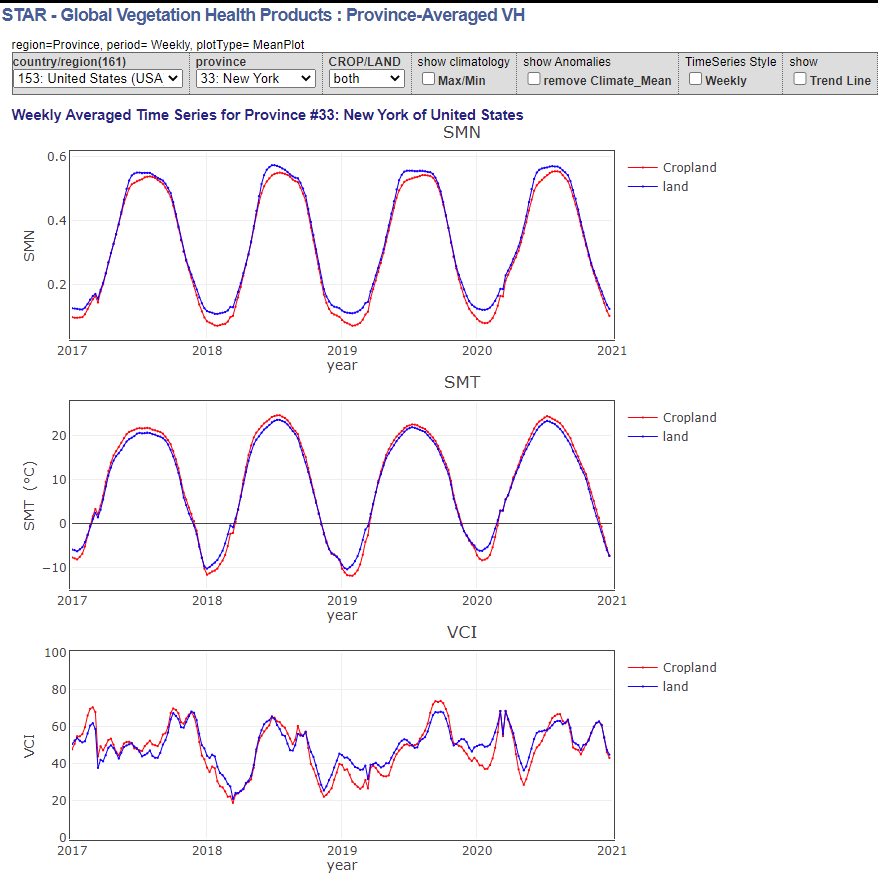From the NOAA STAR Center for Satellite Applications and Research page:
Global and Regional Vegetation Health (VH) is a NOAA/NESDIS system estimating vegetation health, moisture condition, thermal condition and their products.
It contains Vegetation Health Indices (VHI) derived from the radiance observed by the Advanced Very High Resolution Radiometer (AVHRR) onboard afternoon polar-orbiting satellites: the NOAA-7, 9, 11, 14, 16, 18 and 19 and VIIRS from Soumi-NPP satellite.
And
The VH products can be used as proxy data for monitoring vegetation health, drought, soil saturation, moisture and thermal conditions, fire risk, greenness of vegetation cover, vegetation fraction, leave area index, start/end of the growing season, crop and pasture productivity, teleconnection with ENSO, desertification, mosquito-borne diseases, invasive species, ecological resources, land degradation, etc.
The following indices and products are available:
Vegetation Health (VHI)
Vegetation Condition Index (VCI)
Temperature Condition Index (TCI)
Soil Saturation Index (SSI)
No noise Normalized Difference Vegetation Index (SMN)
No noise Brightness Temperature (SMT)
and more.
There is a page with maps (and links to shapefiles) and an interactive page with time series graphs for different states. The one for NY is copied here. It seems like there are some uses for stats courses tied to correlations with temperature (and you can add climate max/min to the graphs) and more. There is a page to download data (see left sidebar) but you’ll have to be able to handle netcdf files.
